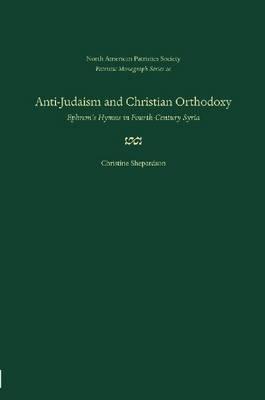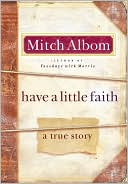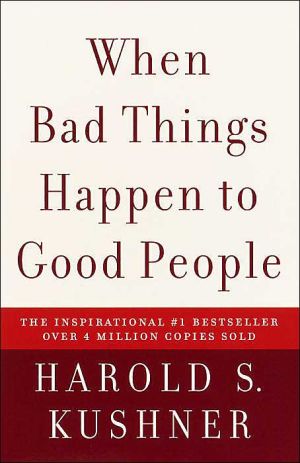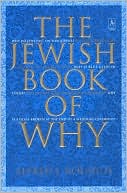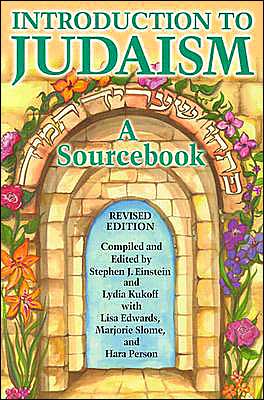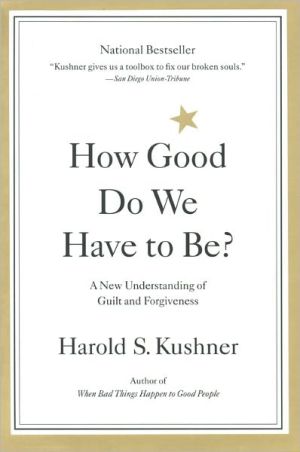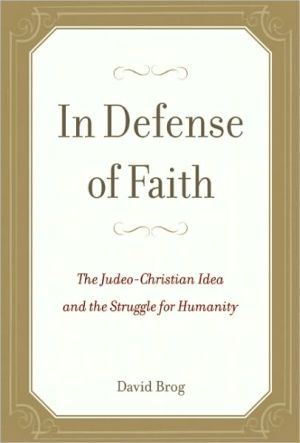Anti-Judaism and Christian Orthodoxy: Ephrem's Hymns in Fourth-Century Syria
The politically embroiled and sharply divided Council of Nicaea (325) provided a turbulent beginning to Christianity's struggle for self-definition in the political arena. Questions of ultimate truth aside, those who could legally claim the title of Christian orthodoxy were those whose teachings had the backing of the emperor's legal and military authority. Despite the concrete decisions of 325 and the ecumenical council's attempt to create an imperial orthodoxy, the decades that followed...
Search in google:
The politically embroiled and sharply divided Council of Nicaea (325) provided a turbulent beginning to Christianity's struggle for self-definition in the political arena. Questions of ultimate truth aside, those who could legally claim the title of Christian orthodoxy were those whose teachings had the backing of the emperor's legal and military authority. Despite the concrete decisions of 325 and the ecumenical council's attempt to create an imperial orthodoxy, the decades that followed witnessed ongoing battles between those Christians who supported the council's outcome and those who did not. This book investigates the complex anti-Jewish and anti-Judaizing rhetoric of Ephrem, a fourth-century poet, deacon, and theologian from eastern Roman Syria whose Syriac-language writings remain unfamiliar and linguistically inaccessible to centuries of scholars who study the well-known Greek and Latin writings of his contemporaries. A critical reading of Ephrem's numerous poetic writings demonstrates that his sharp anti-Jewish and anti-Judaizing language helped to solidify a pro-Nicene definition of Christian orthodoxy, cutting off from that community in the very act of defining it his so-called Judaizing and Arian Christian opponents, both of whom he accused of being more like Jews than Christians. Through carefully crafted rhetoric, Ephrem constructed for his audience new social and theological parameters that reshaped the religious landscape of his community. This book shows that the anti-Jewish polemic of Ephrem's hymns represents his calculated efforts to leave his Syrian congregation with no viable alternative but to conform to the Council of Nicaea, his own model for Christianorthodoxy.Comparing Ephrem's texts with the contemporary Greek writings of Athanasius, the renowned bishop of Alexandria, Christine Shepardson reveals the significant role that anti-Jewish rhetoric played more broadly in this critical fourth-century theological conflict, and demonstrates that long-ignored Syriac-speaking Christians such as Ephrem participated fully in the fierce struggle to define Christian orthodoxy for the Roman Empire.
Anti-Judaism and Christian Orthodoxy\ Ephrem's Hymns in Fourth-Century Syria \ \ By Christine Shepardson \ The Catholic University of America Press\ Copyright © 2008 The Catholic University of America Press\ All right reserved.\ ISBN: 978-0-8132-1536-5 \ \ \ Chapter One\ Syria and the Politics of Christian Orthodoxy \ One spring in Mesopotamia as Passover and Easter approached, Ephrem's fourth-century church resounded with the anti-Jewish refrain from another of his Syriac hymns: "Glory be to Christ through whose body the unleavened bread of the [Jewish] People became obsolete, together with the [Jewish] People itself!" Ephrem's renowned choir of Christian women sang to his congregation, warning of the danger that he perceived in the unleavened bread of the Jewish Passover: "The evil [Jewish] People that wants our death, enticing, gives us death in food." Again, after each verse, came the reverberating rhythm of the hymn's insistent, alliterative refrain (shubhâ la-mshihâ da-byad pagreh btel pattir 'ammâ 'ammeh d-'ammâ). Through their own voices, Ephrem, Christian deacon and poet, charged his church members to "loathe" and "flee from" the unleavened bread. In this overlapping liturgical season, he recalled a murderous history of "the [Jewish] People" who "killed the Son" and whose hands were "defiled with the blood of the prophets." With an allusion to Matthew 27: 25, the choir warned, "Do not take, my brothers, that unleavened bread from the [Jewish] People whose hands are covered with blood.... For that blood for which they cried out that it might be upon them is mixed in their festivals and in their Sabbath." The hymn's anti-Jewish rhetoric peaked in the final polemical verses: "The People that does not eat from a pig is a pig that wallows in much blood. Flee and distance yourself from [the People]! Look, it shakes itself off! Do not let the sprinkling of the blood contaminate you!"\ Through this hymn and others like it, Ephrem (ca. 306-373) taught his congregation to distinguish "Jewish" from "Christian" behavior, and claimed that God loved only Christians and rejected the "obsolete" Jews. Others of Ephrem's hymns similarly denounced "Arian" Christians as dangerous heretics who imitated the blind, rejected, murderous Jewish people. Ephrem's congregants thus left his church services each week prepared to see a world that mirrored the ideals of the Council of Nicaea (325 CE), which ostensibly established Christian orthodoxy for the Roman Empire by rejecting "Arian" teachings and forbidding Christians to celebrate during the Jewish Passover. Through his hymns, Ephrem trained his church attendees to think of Christians and Jews as binary opposites, to shun the Passover festival, and to fear contemporary Jews and "Arian" heretics, who should be clearly distinct from "true" Christians. Ephrem's worldview reflects the "orthodoxy" of the Council of Nicaea. The liturgical rhetoric of his hymns, however, suggests that the local religious boundaries in eastern Syria were not so clearly defined. His pleas that his church congregants not partake of the unleavened bread and his suggestions that there were some in his audience persuaded by "Arian" theology imply that Ephrem struggled through his hymns to call into existence a new Syriac Christianity, one that better reflected the outcome of the Council of Nicaea that he understood to define Christian orthodoxy.\ Ephrem's poetry participated in empire-wide conversations on the relationship between Judaism and Christianity, the definition of Christian orthodoxy, and the theological and political controversies that followed the Council of Nicaea. His writings are, however, strikingly absent from scholarly conversations on these topics. From late antiquity to the present, eastern Roman Syria has conjured up exotic, "oriental" images for western writers. For those accustomed to the known classics of the Greek East and the Latin West, the Syriac writer Ephrem has remained an obscure figure, shrouded behind the impenetrable veil of a language that never became a sine qua non of western erudition. Although eastern Syria has stood at the margins of western scholarship on early Christianity, Ephrem's Syriac texts demonstrate his passionate participation in the imperial theological struggles of the fourth century, as well as his relation to his Greek-speaking contemporary Athanasius. The violent anti-Judaism within Ephrem's hymns represents his calculated effort to leave his Syrian congregation with no alternative but to conform to the imperial orthodoxy of the Council of Nicaea.\ The politically embroiled and sharply divided Council of Nicaea provided a turbulent beginning to Christianity's imperial struggle for self-definition. Questions of ultimate truth aside, those who could legally claim the title of Christian "orthodoxy" were those whose teachings had the backing of the emperor's legal and military authority. Despite the concrete decisions of the Council of Nicaea, though, the decades that followed witnessed an ongoing battle for authority between those pro-Nicene Christians who supported its outcome and those "Arian" Christians who did not. In their attempts to invalidate their opponents' claims to orthodoxy and equate their own views with the ideal Christianity, pro-Nicene leaders such as Ephrem conflated their fourth-century "Arian" Christian opponents with the stereotypical "Jew," by the fourth century so clearly and conveniently not Christian. Far from a random association, there is a distinct theological connection between Judaism and "Arian" Christianity in that some pro-Nicene leaders such as Athanasius argued that both groups similarly subordinate the Son to God the Father. Comparison will show, however, that for all his similarities to Athanasius in some respects, Ephrem highlights his Christian opponents' Pharisee-like searching instead of elaborating at length on the "Jewish" details of "Arian" teachings about the Son in the ways that Athanasius did.\ In the face of somewhat permeable local Syrian boundaries between church and synagogue, Ephrem's sharp anti-Jewish rhetoric helped to call into existence clear Nicene borders around Syriac Christianity, cutting off from that community (in the very act of defining it) both Judaizers (whose behavior was "too" Jewish) and "Arians" (with a subordinationist theology). Refusing to doubt, even in the face of imperial opposition, that Nicene Christianity was the only true Christianity, and that Christian orthodoxy should be synonymous with the Roman Empire, Ephrem spread his message about the new Nicene boundaries of Roman Christianity through his Syriac liturgical writings. Ephrem's highly nuanced rhetoric illuminates the complex ways in which both Syriac and Greek authors employed anti-Jewish language in the fourth-century conflicts that consumed Roman Christianity.\ Defining Christianity against Heretics and Jews\ By the fourth century, Christianity already had a long history of denouncing allegedly false Christian teachers and also Jews as threats to "true" Christians. Even so, scholars of late antiquity have long recognized that from the perspective of historical scholarship claims of truth and orthodoxy are relative. Just as the proto-orthodox Christian leader Irenaeus upbraided second-century gnostic teachers for misinterpreting Scripture and warned his audience against being persuaded by gnostic interpretations, so too the second-century gnostic teacher Ptolemy instructed his reader against the inaccurate scriptural interpretations and teachings of his proto-orthodox opponents. While modern historians may grant equal weight to each of these claims, early Christian writers themselves engaged in an aggressive struggle to construct and preserve their conception of Christian orthodoxy. With the political triumph-at least momentarily-of Athanasius's supporters at the imperially convened Council of Nicaea, a Christian orthodoxy nominally emerged with the political support to enforce its doctrine and practices. In light of this outcome, earlier proto-orthodox authors appeared to narrate the natural and necessary progression of Christianity in the face of divisive heresies. Such writers as Irenaeus and Tertullian attempted to naturalize and enforce a particular version of Christian "orthodoxy," providing models for later authors. Even though Ephrem wrote after the Council of Nicaea, he too denounced his opponents and promoted his views in a context in which there were still competing claims of Christian orthodoxy.\ Not only arguments against heresies, but also early Christian attacks on Jews, Judaism, and Judaizing proved influential on fourth-century writers. In the years after Jesus' death, his first followers struggled to interpret the relationship of their Jewish messiah to other forms of first-century Judaism. The one-time Pharisee Paul of Tarsus describes his disagreement with other apostles about whether or not Gentiles needed to follow the law of Moses in order to join the Jesus movement. Later Christian texts reflect the continuation of this debate, with authors portraying Jews and Judaism in a wide variety of negative ways. Christians adopted the Jewish Scriptures and reinterpreted them, proclaiming that Jesus had fulfilled their prophecies. In order to differentiate themselves from Jews, authors such as Tertullian, Justin Martyr, Melito of Sardis, and the author of the Epistle of Barnabas compiled accusations and faults of Jews and Judaism, arguing that the Jews had misinterpreted these Scriptures and rejected the God who had given them. Over time these collective descriptions supported strong negative Christian stereo-types of Jews and Judaism. Such anti-Jewish Christian writings provide the background for Ephrem's anti-Jewish polemic. They also allowed Ephrem to use the familiar figure of "the Jew" more broadly as an anti-type of an orthodox Christian.\ Ephrem, Empire, and Fourth-Century Christian Controversy Ephrem's anti-Jewish writings emerged in the context of the complex Trinitarian controversy that consumed Roman Christianity during the fourth century. As Christianity gained political support across the empire, political and religious leaders battled to define and legitimate one version of Christianity as orthodoxy. In the inflamed rhetoric of the disputants, this struggle crystallized into a disagreement over the definition of the nature of the Son, the Second Person of the Trinity. In the course of the fourth century, Nicene Christians' opponents changed from the followers of Arius, to Aetius, to Eunomius. Yet throughout, writers such as Ephrem who claimed the validity of the first Council of Nicaea leveled accusations that included anti-Jewish rhetoric against these so-called Arian opponents.\ This intra-Christian conflict, which began as a local disagreement in Alexandria between Arius and the Alexandrian bishop Alexander, soon affected religious and political ties across the empire. Arius accused Alexander, and his assistant Athanasius, of teaching that there were "two Unbegottens" within the Godhead-one unbegotten Father and one unbegotten Son-thereby threatening Christian monotheism and approaching dangerously near the Sabellian "heresy," which did not distinguish clearly enough among the three Persons. If the Father and the Son were of exactly the same substance, each one unbegotten, then, Arius argued, Christians would have two gods and not one, a theology that Christian Scripture clearly rejected. Arius's opponents, on the other hand, accused him of degrading the Son to the status of (mere) creature through his claim, "there was when he [the Son] was not." If there was a time when the Son was not-in other words, if the Son were the Father's first creation, rather than unbegetton like the Father-then, Athanasius argued, the Son was not fully God and therefore could not effect salvation for humanity, another of the Father's creations.\ In 325 CE Constantine, sole emperor of the Roman Empire since 324, called a council of bishops at Nicaea in order to settle, among other things, this dispute about the nature of God's Son. Ephrem's bishop, Jacob of Nisbis, attended this council, and Ephrem spent the rest of his life advocating for its outcomes. Although Athanasius's supporters prevailed at this Council, it proved to be only the beginning of this imperial controversy. In the following decades Christian leaders continued to debate the language of Trinitarian orthodoxy, and political leaders continued to influence the outcome by giving their support to one side or another of the conflict.\ Emperors' participation in this struggle heightened its significance for Christian leaders such as Ephrem. For much of Ephrem's adulthood, for example, the emperor who controlled Syria rejected the Council of Nicaea whose "orthodoxy" Ephrem upheld. The far-reaching impact of this dispute became particularly pronounced with the involvement of Julius, Bishop of Rome. Although Athanasius had been exiled from his see in Alexandria in 335 amid the general support for Arius in the eastern empire, Athanasius gained the favor of Julius and other western bishops. The debate over Christian doctrine soon became a matter that involved the Roman emperors as well, with complex political repercussions as the Roman Empire fell under the control of emperors of differing religious sympathies. After Constantine's death in 337, imperial control was split among his sons, and pro-Nicene Christians experienced different fortunes in different parts of the empire. Specifically, Constans, who ruled the western half of the empire, supported Athanasius, while his brother Constantius ruled the eastern half in which Ephrem lived and supported Athanasius's "Arian" opponents. Constantius gained control of the entire empire upon Constans's death in 350, and political favor (as shown in official legislation, episcopal appointments, decrees of exile) moved further away from the position defined at Nicaea. Following Constantius's death in 361, Julian "the Apostate" became sole ruler of the empire. Although Julian is perhaps best known for his anti-Christian stance and his support of traditional Roman religious practices, he nonetheless recalled several pro-Nicene bishops from exile, ostensibly in order to foment further discord within the already fractious Christian community. The rule of Julian's successor, Jovian, was fleeting (363-364), and in 364 Valens, who supported subordinationist Christian teachings, took control of the eastern empire. Within this context, pro-Nicene Christians such as Athanasius and Ephrem had good reason to fear that their "heretical" opponents could "win" and their rhetoric against them became increasingly sharp.\ Despite the complexity of this intra-Christian controversy, by the 340s Athanasius had begun to portray the struggle as a clear debate between (pro-Nicene) "Christians" and (heretical) "Arians," a group that Athanasius insistently calls into existence as a coherent group through his writings. In and out of exile, Athanasius remained a key figure throughout the fourth century as, acerbically attacking Arius and "Arians," he worked to distill what was eventually to be seen by his supporters as a sharp either "orthodox" or "Arian" dichotomy within Christianity. His rhetoric was so persuasive that in the following decades Ephrem and other supporters of Nicaea aggressively continued to press any Christian opponents who subordinated the Son to the Father into the category of "Arian," despite the new variations in their teachings. As such, Aetius and Eunomius both found themselves described in the writings of pro-Nicene Christian leaders as "Arians," and their subordinationist teachings subjected them to similar anti-Jewish accusations.\ In the fourth-century Roman Empire, a legal differentiation between "heresy" and Christian "orthodoxy" became a matter of imperial politics. Long after the Council of Nicaea, charges of "heresy" and claims of "orthodoxy" echoed around the empire as Christian leaders continually vied for the support of successive emperors in the East and the West; their personal fates and the Christian messages that they preached were inexorably bound up with the changing political scene. In this world of political and ecclesiastical turmoil, it could help your claims to "orthodoxy" to prove definitively the unorthodoxy of your opponents.\ (Continues...)\ \ \ \ \ Excerpted from Anti-Judaism and Christian Orthodoxy by Christine Shepardson Copyright © 2008 by The Catholic University of America Press. Excerpted by permission.\ All rights reserved. No part of this excerpt may be reproduced or reprinted without permission in writing from the publisher.\ Excerpts are provided by Dial-A-Book Inc. solely for the personal use of visitors to this web site. \ \
Contents Acknowledgments....................ixAbbreviations....................xi1. Syria and the Politics of Christian Orthodoxy....................12. Defending Nicaea against Jews and Judaizers....................213. Ephrem's Use of Scriptural History....................694. Ephrem, Athanasius, and the "Arian" Threat....................1065. Syria and the Construction of Christian Orthodoxy....................157Bibliography....................163General Index....................187Index of Ephrem's Writings....................191
